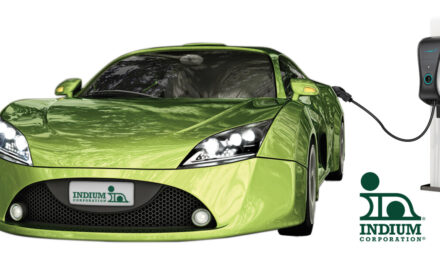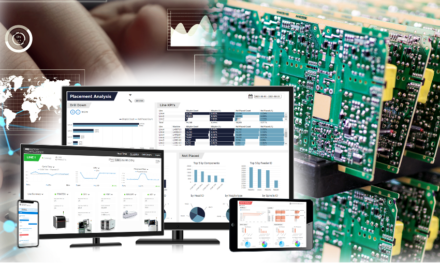EMS Companies and the Internet of Things: A Tight-Knit History
Posted by Jennifer Read | Jul 26, 2018 | Feature, EMS, Smart Factory

Originally published on AsteelFlash Blog
The idea of turning a basic object into an intelligent one was already being thrown around in the 1980s. Electronic manufacturing companies were on board, but the necessary technology was still missing. The term “Internet of Things” was first coined in the late 1990s by the MIT team who discovered how to link objects to the Internet through an RFID tag. As wireless internet later became a reality, the Internet of Things became more of a realistic possibility. In the last few years, this technology’s true potential was finally unleashed, and the demands in printed circuit board assembly (PCBA) skyrocketed. With the support of EMS companies, which is essential for the assembly of very large quantities of PCBs with respect to mass production, the Internet of Things is now being used in every aspect of our lives, professional and personal.
EMS Providers and the Products That Changed Our Lives
Connected objects have revolutionized the way we live. They have changed how we communicate and make our lives a whole lot easier. Electronic Manufacturing Service companies are expert in printed circuit board assembly. They deliver engineering and manufacturing services for mass production. Thus, they have contributed to the development of the Internet of Things for mass consumption.
In 2018, more than 7 billion IoT devices are consumer products. By 2020, this number will approach 13 billion and 20 billion in total if you include businesses.
This growth is linked to the EMS providers’ ability to ship more and more PCBAs that respect a very strict manufacturing process that is at the forefront of technology.
Among those IoT devices, smart grids have changed the consumer’s life. They connect more efficiently to resources and improve the overall reliability of systems, both of which save the consumer’s time and money. Electronic contract manufacturing companies also take important action in the assembly of sensors’ PCBs, used to track any type of information in the product, useful to the consumer, object or manufacturer.
PCBs in popular products like smart speakers, connected thermostats, and smart light bulbs are managed by Electronic Manufacturing Service companies, among others. From design and engineering to prototyping, New Product Introduction (NPI) and printed circuit board assembly, contract manufacturing companies consider IoT devices and smart homes to be the heart of their development strategy for the coming years. These smart homes not only increase the quality of living but also decrease power consumption.
How the IoT Is Transforming Electronic Manufacturing Solutions
While the Internet of Things was developed by using contract manufacturers, it is now changing how these same contract manufacturing companies operate. Many challenges arise when providing electronic manufacturing solutions for the IoT. For one, the explosion in demand for data and collection of data has complexified the need for printed circuit board assemblies. EMS companies must be able to respond to the market demand while maintaining high-quality standards that will enable IoT developers to face a competitive market and respond to security concerns. The best electronic manufacturing services providers are dedicated to tackling this challenge. By introducing the Internet of Things as a priority in their factories, they have created smart factories and challenged traditional electronic manufacturing companies.
EMS Providers: At the Heart of It All
While we might not realize it, Electronic Manufacturing Services are intrinsically linked to the changing forces in our world. While contributing to the improvement of the consumer’s quality of living through connected objects, EMS companies are generally also experts in other fields, such as Smart Homes, Smart Cities, Smart Building and Green Technologies, in the context of PCB assembly.
Asteelflash, an Electronic Manufacturing Services partner in Europe, Asia, and America has adapted all traditional processes to the Internet of Things, including new methods such as 3D printing, big data analysis or machine learning.













